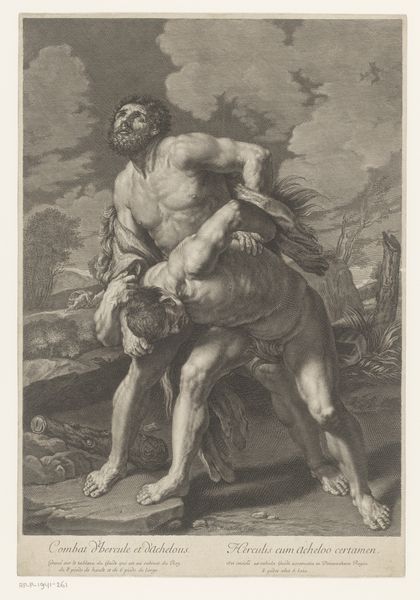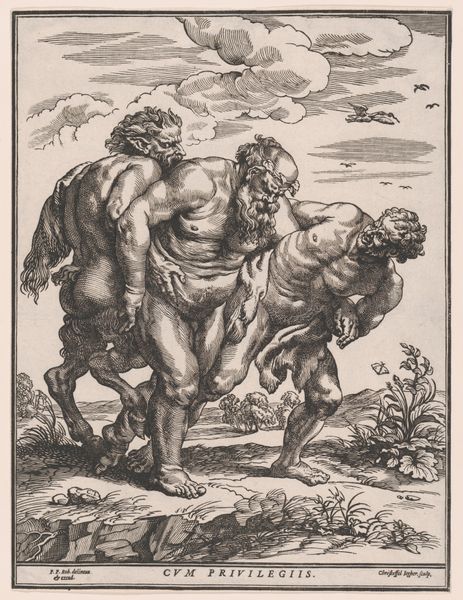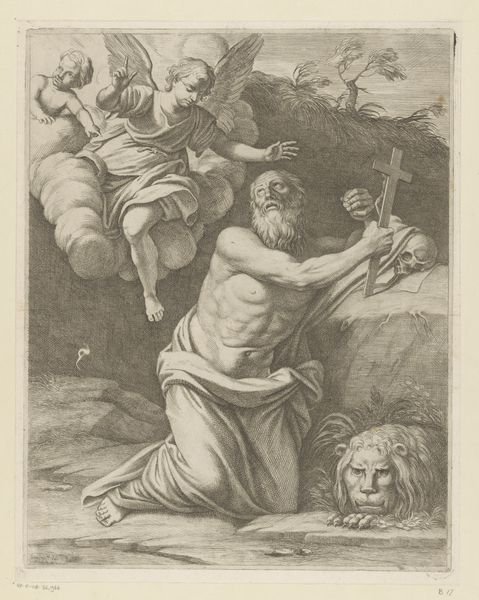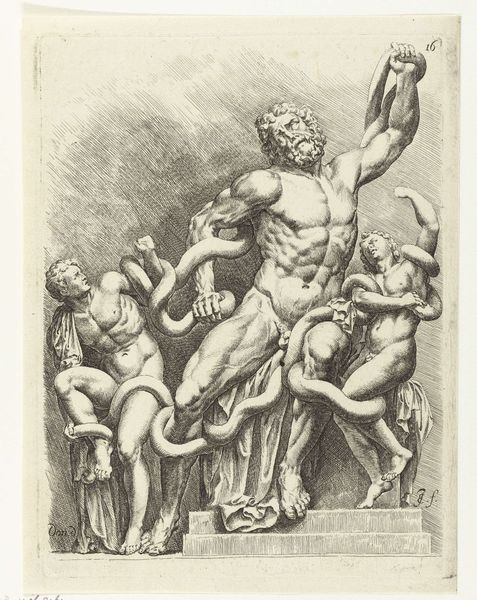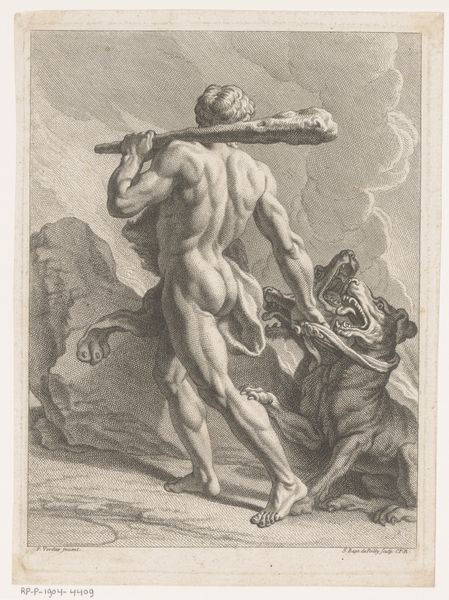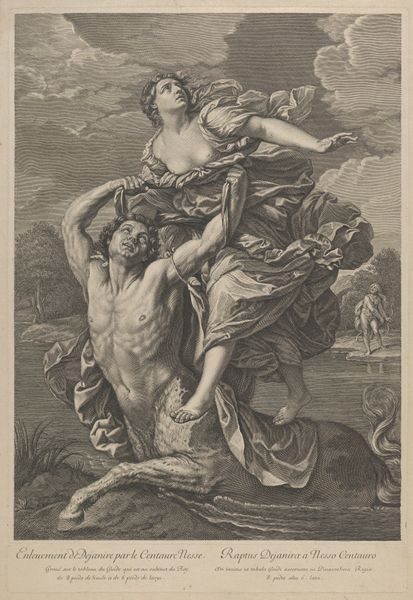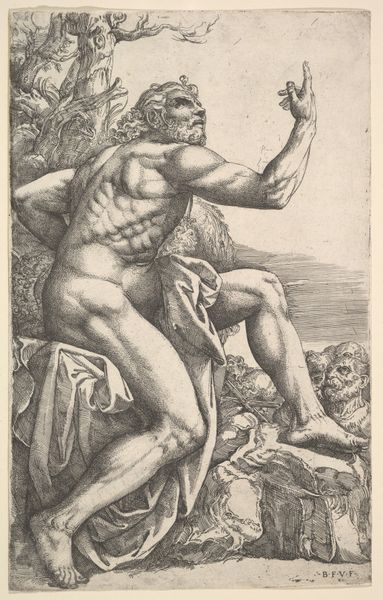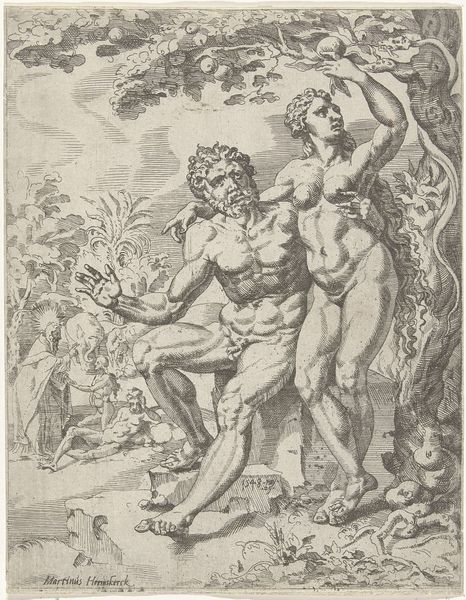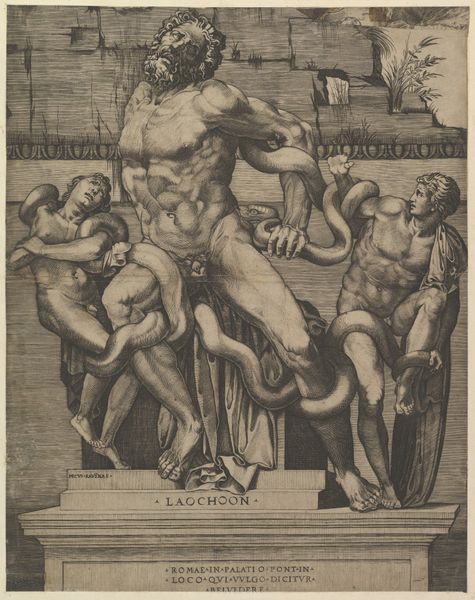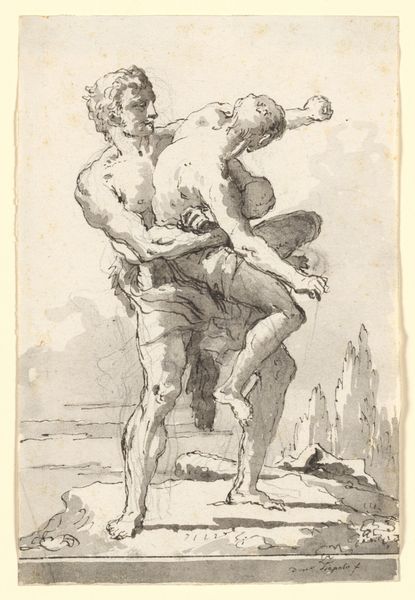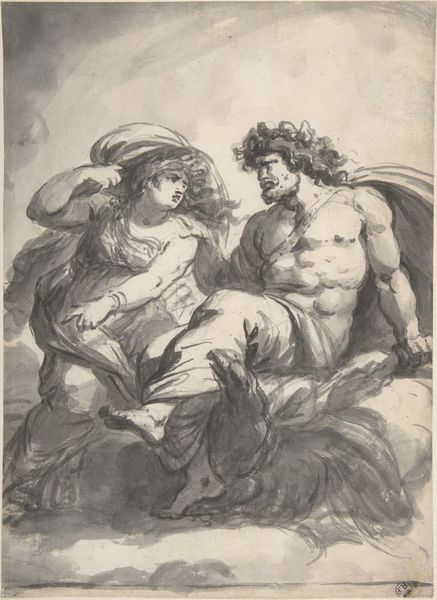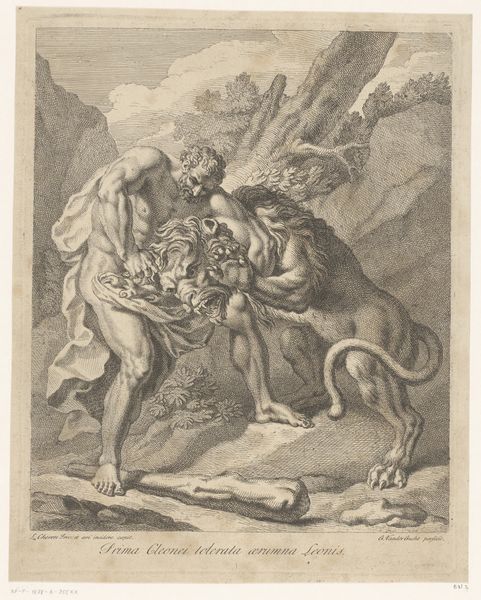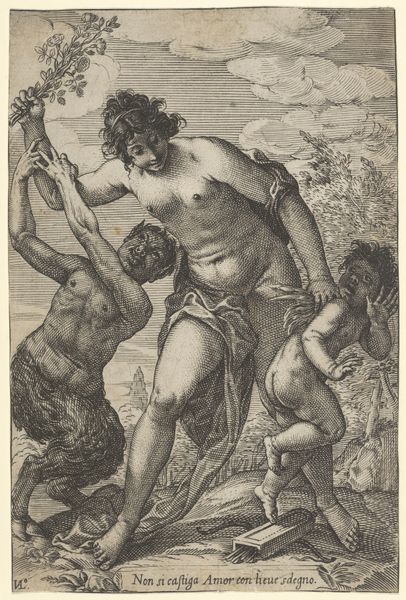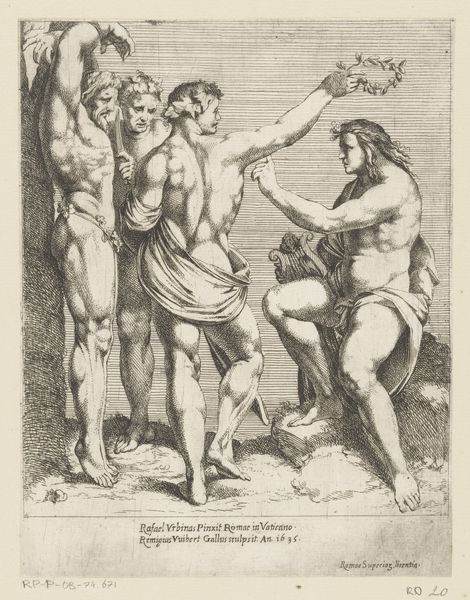
Polyphemus gooit een steen naar de vluchtende Acis en Galathea c. 1641
0:00
0:00
jacquesbelly
Rijksmuseum
print, engraving
#
baroque
# print
#
landscape
#
figuration
#
history-painting
#
nude
#
engraving
Dimensions: height 287 mm, width 216 mm
Copyright: Rijks Museum: Open Domain
Jacques Belly's print captures Polyphemus, the cyclops, hurling a stone at the fleeing lovers Acis and Galatea. The cyclops, a motif from antiquity, embodies primal, untamed forces. Consider the image of the thwarted lover. This primal scene of pursuit, a violent eruption of thwarted desire, echoes through time. One sees it mirrored in countless myths and dramas – the enraged god, the fleeing nymph, the destructive potential of unchecked emotion. The cyclops himself, with his singular eye, represents a kind of monstrous singularity, a force that cannot be reasoned with. The image taps into our collective memory of the monstrous, reminding us of the destructive potential within ourselves and the world around us. Observe the intensity etched in the figures' bodies—a raw, visceral display that speaks directly to our deepest fears and desires. The cyclops, then, is more than a mythological figure; he is a recurring symbol of the irrational, the obsessive, forever resurfacing in our art and our nightmares.
Comments
No comments
Be the first to comment and join the conversation on the ultimate creative platform.
